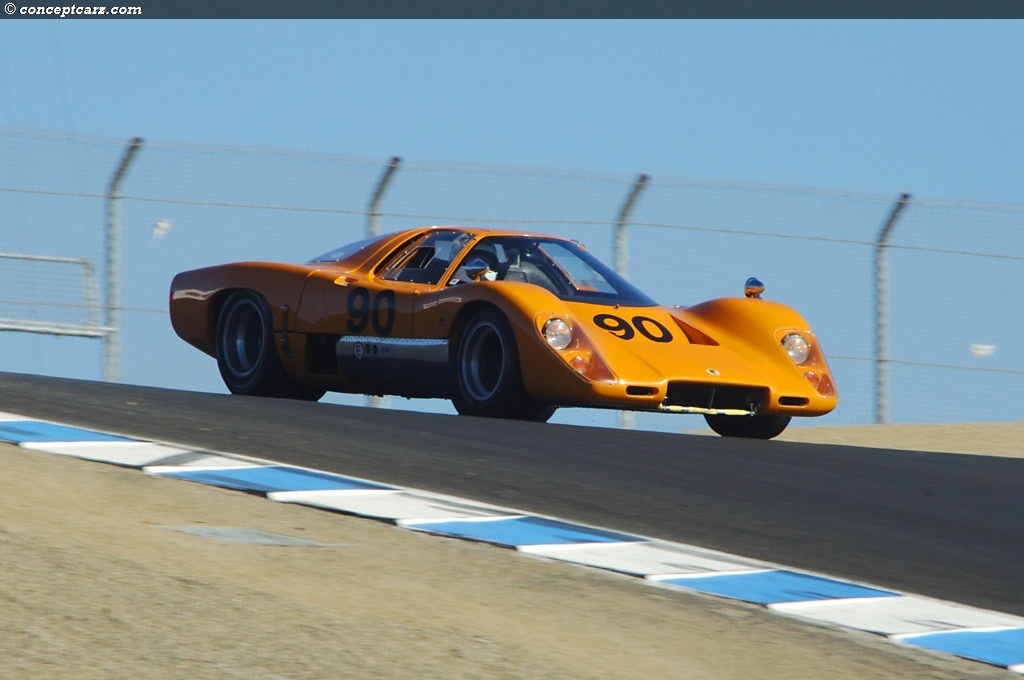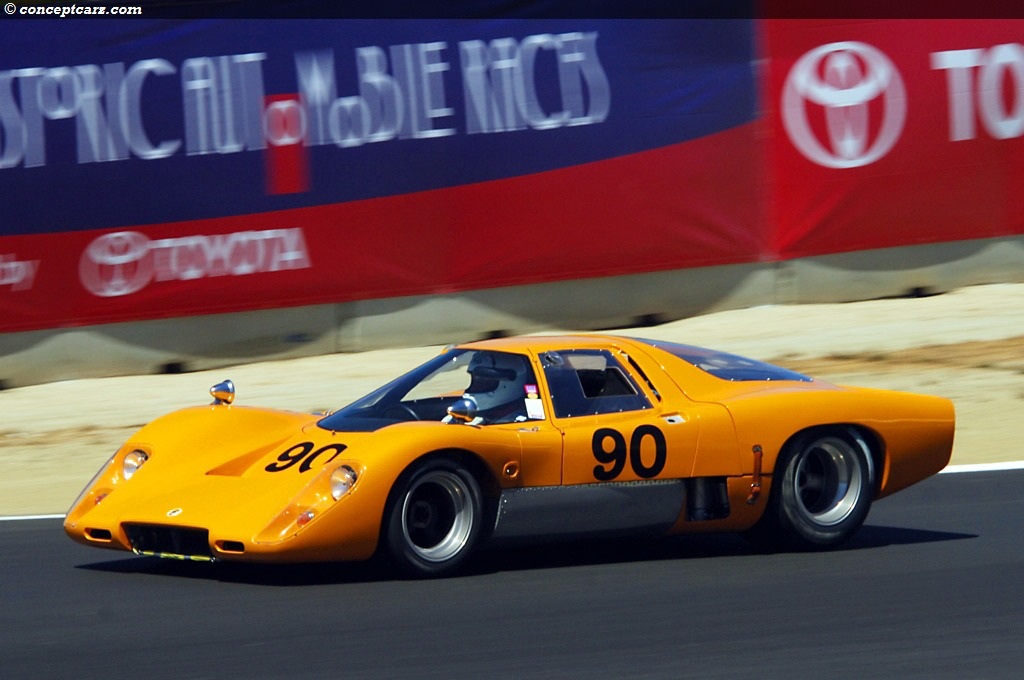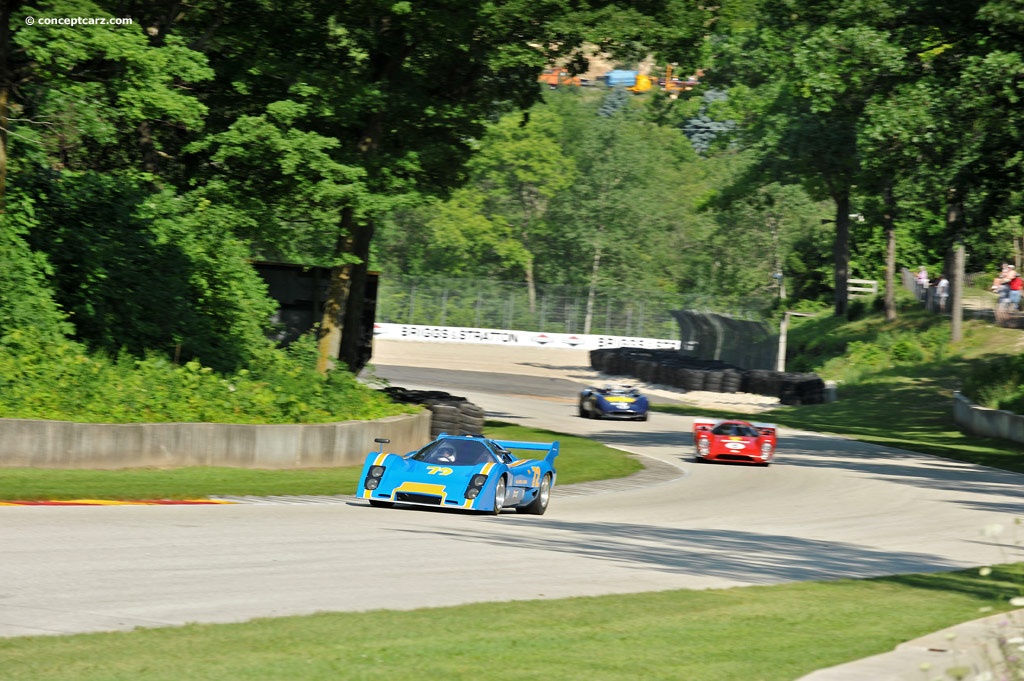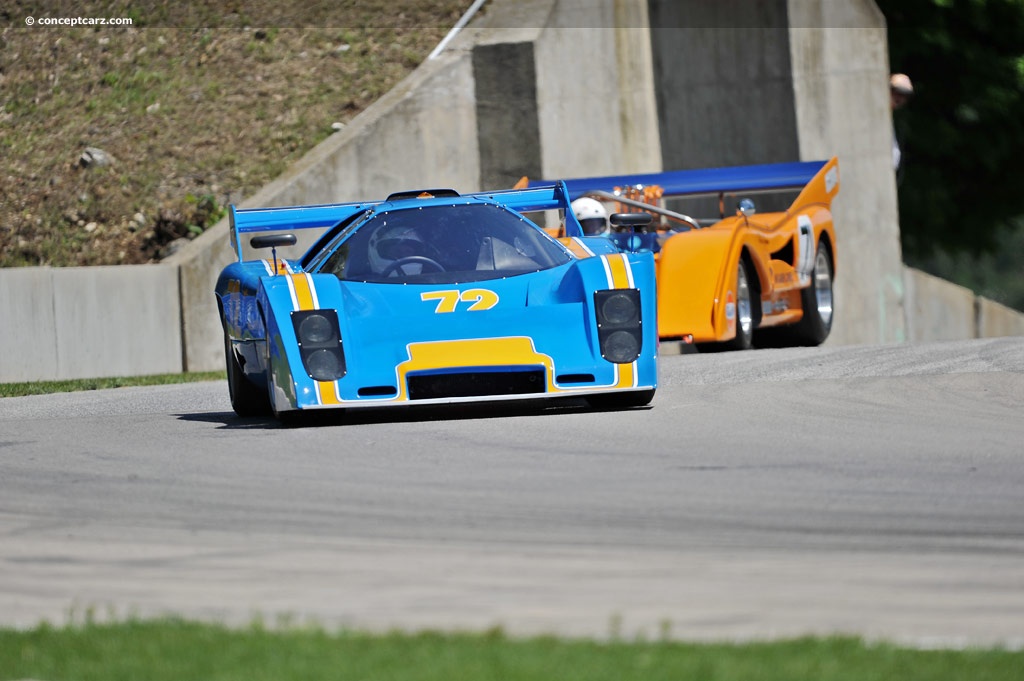New Zealander Bruce McLaren had many talents. He was the youngest-ever Grand Prix winner, scored Ford with their first ever 24 Hours of LeMans victory in 1966, and was a very successful racing car manufacturer. His McLaren M6 cars dominated the Group 7 CanAm series in 1967; his cars did well in other series, such as Formula 1, with Denny Hulme scoring the marque's first victory in 1968. 
Coupe
Chassis #: 50-17
View info and history
Auction entries : 2As the end of the 1960s came into sight, Bruce worked aggressively towards realizing one of his personal dreams and goals of building the fastest mid-engine car in the world based on his very successful racing cars, specifically in the Can-Am series. He intended to cloth an M6 monocoque in a coupe body and used it for contention in the Group 4 category of the World Sports Car Championship. He had wanted to contend the Group 6 prototype category, but new regulations in 1968 limiting displacement to just three liters had him focusing on the Group 4 category. This category required a homologation of fifty cars and limited displacement to five liters. This 5-liter limit was a worry for Bruce as his Chevrolet engines realized their true potential at a higher displacement level, plus the reality that European fuels had lower octane. Even with these potentially problematic concerns, Bruce continued with the development of his Group 4 racer. The homologation requirements were satisfied by Bruce partnering with the British Trojan Company to build the production Group 7 Can-Am cars. The M6 chassis was used for the new Group 4 car. This helped keep costs to a minimum and allowed development to progress at a quicker rate. The M6 chassis was a proven and sophisticated design and an excellent platform upon which to base the new car upon. The design of the car took a mere eleven weeks, and it was given an engine bay adequate to house an American V8 engine. This was McLaren's first car with a full-length monocoque. Its design was kept as simple as possible in order to aid in the mass-production effort. The racing versions of the cars were known as the M6B.The first M6BGT was ready by January 1969. It is believed that all fifty necessary fiberglass bodies were created during the same time, each with a coupe body design that was rather simplistic in traditional McLaren fashion. As the remaining cars were preparing for production, homologation requirements were dropped from fifty, down to twenty-five. This attracted other marques such as Porsche, whose 917 was more competitive than McLarens. Bruce's plan to run the car at LeMans later that year were quickly scrapped. The prototype car was sold to customer, David Prophet; a second car was later created by Trojan and used as a show car. Prophet's car was used in several European races during the 1969 season. It was re-bodied in 1970 and used for the European equivalent of the Can-Am series, the Interseries. The body was very similar to the McLaren M12 design.
Coupe
Chassis #: 50-17
View info and history
Auction entries : 2Prophet's car had little success during the 1970 Interseries season. At the conclusion of the season, it was re-bodied as a coupe and later sold to a Canadian individual in 1971. The car was later converted for road-going use and used as a daily driver for many years. Ownership later passed to the Gilles St. Pierre collection, where it remained for many years. It was sold to its current owner in 2006. Bruce McLaren had a third car created for his own personal use. After his tragic death at the Goodwood track in 1970, the car was purchased by his teammate Denny Hulme and had it shipped back to New Zealand, where it was put on display at the Auckland Museum of Transportation. The car, now registering just 1900 miles, is part of the US-based Matthews collection.Many years after Bruce McLaren had passed away, his dream of building a road-going car and LeMans contender was finally realized. Ron Dennis and Gordon Murray created the McLaren F1 which was a highly successful road-going car and a winner at the 24 Hours of LeMans. 
CoupeThe three original M6GT cars still exist in modern times. Several replicas, an estimated five, have been created from the remaining M6B and M12 chassis and M6GT bodies.The McLaren M6A, M6, M6GT, and M6B GT- The McLaren M6A Group 7 prototype race car, designed and developed by Bruce McLaren, was built by the Bruce McLaren Motor Racing for the 1967 Can-Am season. With Chevy-power, the M6A's earned McLaren its first Can-Am Championship. The M6As were replaced by the M8A.
Coupe- The McLaren M6B Can-Am car was developed in partnership with Trojan–Tauranac Racing as a customer car.- The McLaren M6GT was a closed-cockpit sports car designed to contest the 24 Hours of Le Mans. Only a few M6GT cars were built by McLaren and Trojan, and since they were unable to satisfy the new FIA homologation rules requiring 50 examples, they did not race at Le Mans. Two examples were later converted to road cars, one of which became Bruce McLaren's personal transport. Twenty-five years later, McLaren would get its opportunity to race at Le Mans with its McLaren F1, winning the race in 1995.
by Daniel Vaughan | Feb 2008

Coupe
Chassis #: 50-17
View info and history
Auction entries : 2

Coupe
Chassis #: 50-17
View info and history
Auction entries : 2

Coupe

Coupe
by Daniel Vaughan | Feb 2008
1969 McLaren M6B GT Vehicle Profiles
Recent Vehicle Additions
Related Automotive News

THE McLAREN F1
FOR THE DRIVER VITALLY – AS IN ONE OF McLARENS WORLD CHAMPION RACING CARS – DRIVER AND VEHICLE BECOME ENTIRELY AS ONE
The primary design consideration for the McLaren F1 has been to make it without reserve a drivers car, an extremely high-performance...

John Barnard's Finest: Some of the Greatest of Barnard's Design
The latter-part of Barnards Formula One career would be filled with disappointments and disputes. However, there was no disputing the genius of the man from London. In fact, a couple of innovations that are mainstays in Formula One design were first...

1963-2013: 50 Years Of Race-Winning Success As Mclaren Celebrates Half Century
Five decades of race winning at the top levels of motorsport honoured at the home of McLaren in Woking
Vodafone McLaren Mercedes driver Sergio Perez arrived at the celebrations in the 3,000th 12C to roll off the production line
2009 Formula 1™ wo...

2013: CELEBRATING 50 YEARS OF McLAREN
Life is measured in achievement, not in years alone.
When a 27-year-old Bruce McLaren penned those words in 1964, his new company, Bruce McLaren Motor Racing Ltd, was less than a year old.
In those days, Bruces vision was shared by fewer...

1967 Can-Am Road America: The Beginning of the 'Bruce and Denny Show'
While Formula One will be forever considered the pinnacle of motorsport, from a period between 1966 and 1986 there existed a series that would likely be the closest to anything goes as any motor racing series could truly get. Based upon the FIA Group...



































